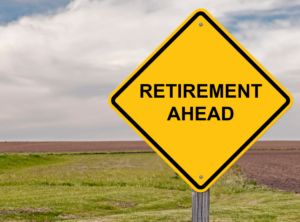The 4% Pension Rule to Retire Comfortably
Moving from contributing to your pension to accessing it for your retirement is a major milestone. But understanding when to retire and how the 4% pension rule can help ensure you have a good stream of income is important.
Deciding how and when to start withdrawing money from your pension pot can influence how long the money lasts and ultimately the lifestyle you will have during your golden years.
As well as enjoying your hard-earned retirement pot, money still needs to be available for bills.
Can applying the 4% pension rule help? We explain what it is and how it works.
WHAT IS THE 4% PENSION RULE?
A popular rule is for investors to take 4% of the value of their fund in the first year of withdrawals and increase that by the rate of inflation each year. This should last a typical retiree 30 years. Academics at the American Association of Individual Investors devised the 4% rule in 1998 after researching a sustainable withdrawal rate for a retirement pot that wouldn’t deplete the savings.
It looked at data from 1926 to 1995 and found a rate of 3-4% is “extremely unlikely to exhaust any portfolio of stocks and bonds.” Like all rules of thumb, says John Corbyn, pensions specialist at Quilter, the 4% concept is based on certain assumptions.
“It needs to be overlayed with someone’s state of health and propensity to spend which is likely to be higher for younger clients and lower for older clients,” he says. “Care needs to be taken to ensure the attitude to risk and propensity for loss is also built into these assumptions. Depending on your risk tolerance, investment strategy, and the actual returns you get, you might consider a slightly more conservative withdrawal rate.”
WHAT ELSE TO KNOW
Corbyn says it is crucial to continuously review and adjust your strategy based on your actual investment returns, spending needs, and the broader economic landscape. “Ultimately, pensions are a long-term savings vehicle and potentially may need to pay for someone’s income for up to 30-40 years,” he adds.
Joshua Gerstler, a chartered financial planner for The Orchard Practice, says that while the 4% rule is a good guide, in reality, our spending is not linear. “We might want to spend more in the early years of retirement, for example, to travel around the world,” he says. “Our spending may slow down as we get older and are less able to get out and about. Albeit this could be offset by an increase in care fees. If you have a financial plan then you will have a good idea of how much you can access without ever running out of money.”
It’s important to note that this strategy may not work for everyone and is just one of many factors to consider when retiring.
MAKE A RETIREMENT PLAN
What you plan to do with your retirement will also have a huge impact on when you should start accessing your pension pot. So it is a good idea to know what you want to do and the costs of doing it.
“If you have dreams of traveling the world then you might need much more retirement income than if you are content with a quiet life at home,” says Corbyn.
“It’s essential to have a realistic projection of your monthly and yearly expenses, including contingencies for unexpected costs.
“Financial planners can help produce cashflow models that look at your holistic finances and show you how much you can expect to have and what kind of retirement lifestyle that will buy you.”
THE IMPORTANCE OF TIMING WHEN RETIRING
You can’t help when you were born but it is worth thinking about when you start accessing the pot. Investment firm Fidelity has more recently attempted to see if the 4% rule has stood the test of time.
One major factor was timing.
It looked at the value of two £100,000 funds after 15 years – one starting in 2000 and one in 2003.
Despite there being just three years between their start points, the pot beginning in 2003 grew to be more than two-and-a-half times bigger than the pot beginning in 2000.
This is because the pot being accessed in 2000 was hit by the dotcom boom, so there wasn’t an opportunity to make up for these losses, while the 2003 pot benefited from the post-crash recovery.
Ed Monk of Fidelity suggests building flexibility into the strategy so you can avoid the worst time to sell your investments.
“Another tactic is to tweak your withdrawals in periods of falling markets so that you take just the income that is produced naturally from investments,” he says.
“This might include the dividends from company shares, income from funds, or the interest from bonds. This might mean a lower level of income overall, but it means you won’t need to actually sell assets when their price has fallen.”
If you’re retiring in a period of economic downturn, adds Corbyn, it may be wise to be more conservative with withdrawals.
Gerstler suggests that it is also important to consider other savings and investments held outside of pensions as part of your whole retirement strategy.
DON’T FORGET ABOUT TAX
Whatever rule you use, experts say it is important to also consider the tax implications.
This is because you will need to pay income tax on withdrawals if you are earning above the personal allowance.
“Tax planning is a crucial aspect of accessing a pension, and those who are thinking for instance of buying an annuity or accessing a pension flexibly by withdrawing taxable amounts should take note if they are earning or taking taxable income from elsewhere, including the state pension,” says Alice Haine, personal finance analyst at Bestinvest.
“For those with larger pensions or higher incomes, there’s a potential risk of being in the higher tax brackets. Some savers in drawdown will moderate their pension income to avoid this.”
Source: Marc Shoffman. “The 4% Pension Rule to Retire Comfortably.” Money Week, September 2023, https://moneyweek.com/personal-finance/4-per-cent-pension-rule
Wondering how much to put into your Retirement Savings each year? Check this out: https://besthamiltonrealestate.com/how-much-should-you-put-into-your-retirement-savings-each-year/


